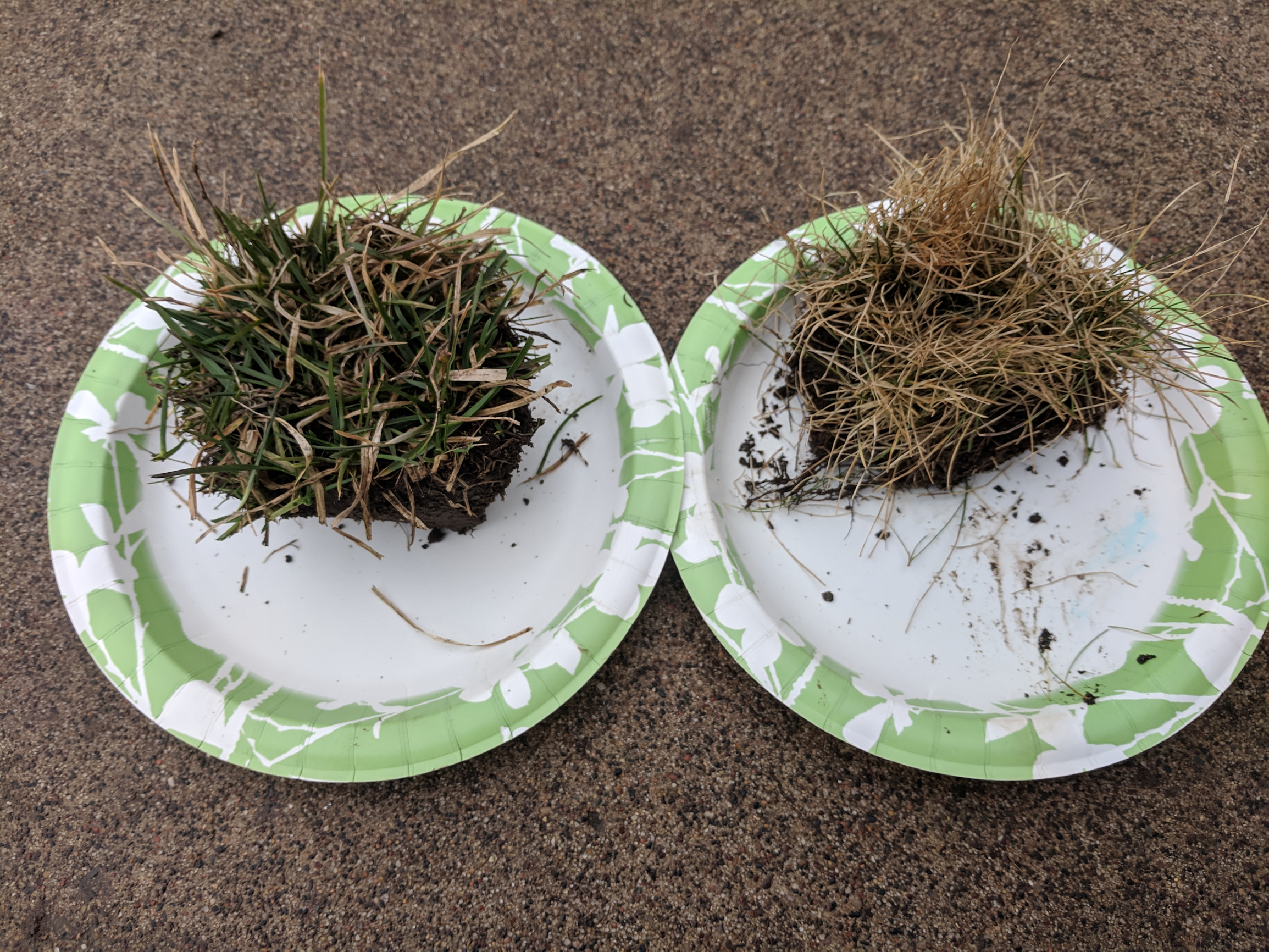By Jon Trappe
Many people associate harsh winters with heavy snowfalls. From a plant’s perspective, snow can actually protect the plant from extreme low temperatures by acting as a form of insulation. Despite the recent winter storm in April and record snowfall in February, the majority of winter 2018-19 was below average precipitation, with much of the state having below average to no snow cover for most of December and January. This lack of insulating snow combined with several days with below zero temperatures was a recipe for potentially high winterkill rates for some turfgrasses.
There are several types of winter injury in turf, including damage from extreme low temperatures, desiccation (drying out), ice encasement, and disease. It is often a combination of these types of injury that lead to winterkill. Moisture in or around the plants is most often the determining factor for if and when winter injury occurs. Areas that do not drain well, low lying areas, or areas with excessive shade can result in excessive moisture. Exposed turfgrasses on slopes and well-drained soils can be more susceptible to desiccation. Other stresses such as traffic or nutrient deficiencies can also lead to more winter injury. The extent of the winter injury can vary by turfgrass species and age of the stand. Immature turf seedlings are often more susceptible to winter injury from low temperatures than are mature stands of turf.
How to know the extent of winter injury in your lawn
Similar to 2018, most of Minnesota will not have actively growing turf until at least the first week of May. Knowing if some areas are lost to winterkill can allow you to plan ahead and purchase seed or sod for when the full extent of winter injury can be realized.
Given the specific conditions mentioned above, you can collect samples of your lawn and bring them indoors to warm up to get a preview of what you can expect later this spring. Using a spade, collect turf samples and the top 2 inches or so of their rootzone (Figure 1). Be sure to collect multiple samples from probable areas as well as one or two samples from areas you do not expect to have much damage. Place the samples on labeled paper plates, water them, and place them in an area indoors that gets direct sunlight or under a grow light. You should be able to see the turf greening up in 5-10 days. If you have lost turfgrass to winterkill, you may need to wait for things to warm up outside to better understand the extent of winter injury or death (Figure 2). If you do need to renovate or repair damaged areas, see Renovating a lawn for quality and sustainability. Prior to renovating, consider if site conditions could be improved to limit their impact in the future. Finally, planting species or cultivars that are more tolerant to winter stresses will go a long way to have a healthy lawn year-round.

